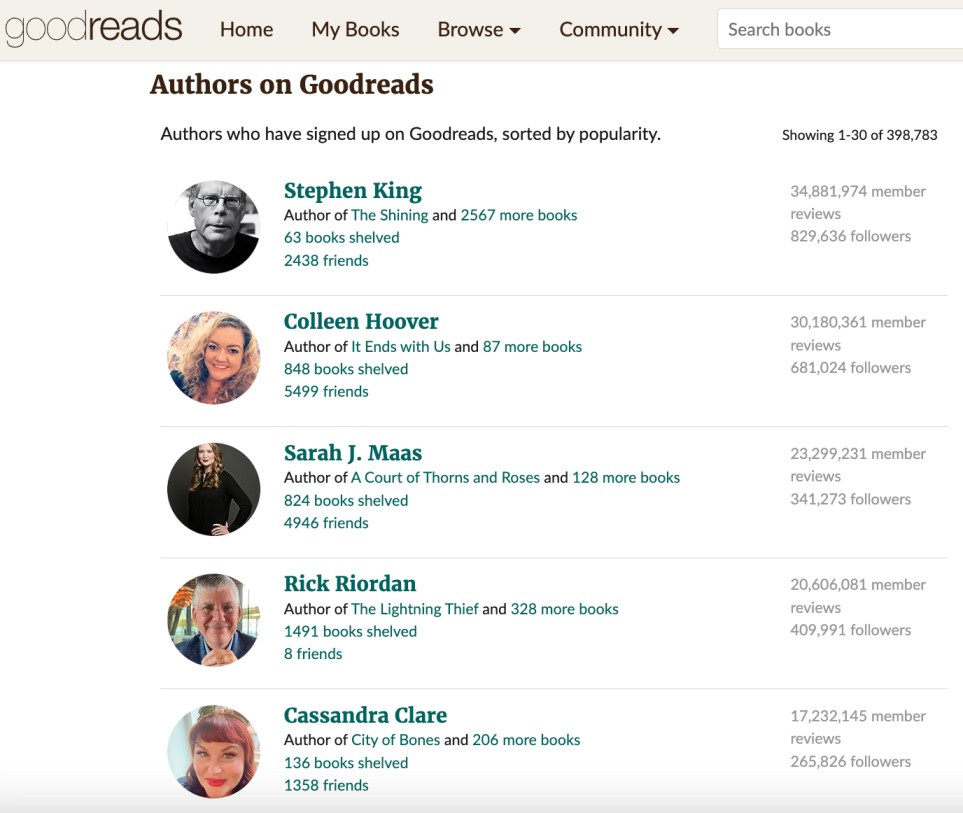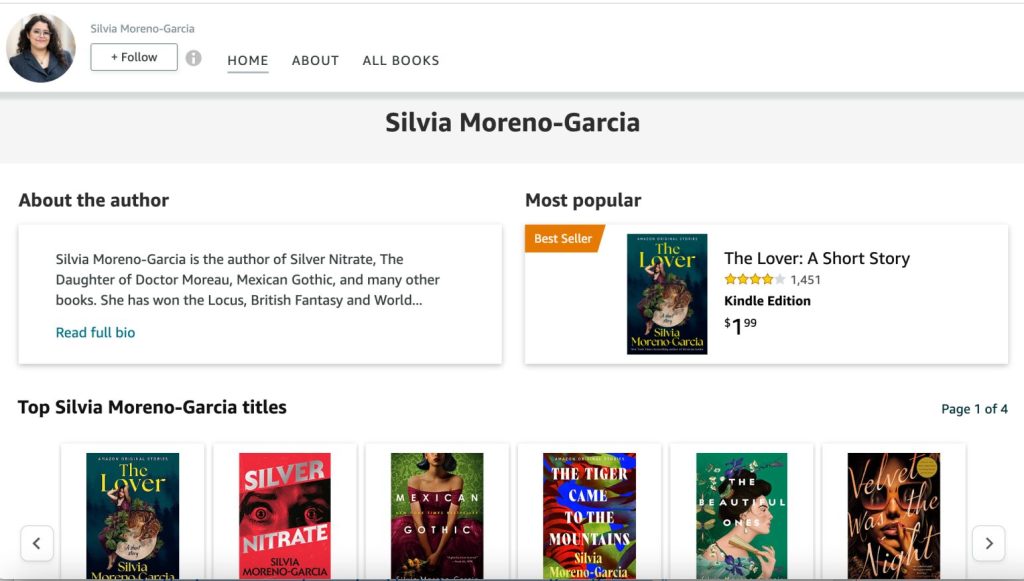Although it is possible to self-publish a book entirely for free, in reality, self-publishing can be a multifaceted and costly process. This is why authors should take every opportunity of the free book promotion. So how do you promote your book for free? This post reviews twenty ways of free book promotion.
1. Promote your book on free promo sites
Although these sites may not bring a huge volume of sales, it is still worth submitting your book and gaining some exposure. For instance, consider AwesomeGang, DiscountBookMan or BestBookMonkey, which offer free and paid promotions for fiction and non-fiction books.
2. Create an author fan page on Facebook
Start by inviting friends and family to follow and like your Facebook page and ask them to spread the word. Facebook offers you the opportunity to be more casual or personal than other social media platforms like LinkedIn or GoodReads.
3. Create a GoodReads author profile

By creating an author profile on GoodReads, you will be able to promote your book on GoodReads, build a following and interact with your readers. For instance, they can submit questions using Ask The Author.
4. Join LinkedIn groups for writers
LinkedIn can help you not only interact with fellow writers and publishing professionals but also promote your book in numerous groups. For instance, Book Writing, Self Publishing & Marketing group has 56,140 members supporting each other in publishing endeavours.
5. Engage with book influencers and reviewers
Find book reviewers and influencers specialising in your genre or niche. Many of them review books on their social media profiles or websites in exchange for a free copy of your book. For instance, the Indie View offers a service called Indie Reviewers List, which connects indie authors with potential reviewers.
6. Contact local libraries
Reach out to your local libraries and ask if they would be interested in including your book in their collection or holding a book reading or an author’s evening. This may be an opportunity for you to promote your book for free among your local community.
7. Create a website
Having a website is a perfect way to raise your profile as an author and increase the visibility of your book. You can also use it to sell your book. Wix, Weebly, Squarespace, WordPress and GoDaddy are website builders that offer their services for free.
8. Offer to do book readings
Offer to hold a book reading in a local coffee shop, cultural centre, library or any place relevant to your book’s message. For instance, if you write about the importance of communication skills in your book, reach out to local schools. They may be interested in broadening their students’ horizons, and you can seize the opportunity to promote your book for free among your target readers.
9. Join #WritingCommunity on Mastodon
Mastodon has gained popularity recently and has a growing community of authors who cheer for each other. Start posting (using 500 characters or less) to become a part of the writers’ network.
10. Post using #ShamelessSelfPromoSunday and #WritersLift on X (Twitter)
X (previously Twitter) has a strong and extensive writer’s community. You can use #ShamelessSelfPromoSunday and #WritersLift hashtags to promote your book for free.
11. Create a newsletter
If you have a website or a blog, you might start writing a weekly or monthly newsletter for your readers. Collect email addresses and start creating content relevant to your book’s message and topic. A newsletter is a great (and free) opportunity for readers to gain access to more of their favourite author’s work. If you don’t have a website, you can create a free newsletter using services such as SendGrid, Brevo or Mailchimp.
12. Start a blog on Medium
Medium is perfect if you don’t want to deal with the hassle of creating a website. You can create posts that will be aligned with your book’s topic and message. Its interface is clean and easy to use, and you can use hashtags to identify the focus of your posts. You can also create an author’s bio with links to your social media, website or bookstore selling your book.
13. Write a guest post
If you own a website, having backlinks leading to your website can improve its visibility and authority. Guest posts are a perfect way to gain these valuable backlinks if they originate from a legitimate website that is relevant to your own page. For instance, you could contact bloggers or writers in your genre or topic and offer a guest post in exchange for a backlink.
14. Create an Amazon author page

If you sell your book on Amazon, you need to set up an account with Amazon Author Central. You will need a strong author bio and a profile photo to complete your author profile.
15. Update your email signature
You can add a link to your book (be it your website or retailer, such as Amazon) to your email signature. There are several generators which you can use to create a beautiful email signature for free. For instance, try a free trial with WiseStamp, NewOldStamp or CodeTwo.
16. Use Instagram and Pinterest to promote book quotes

Create captivating visuals to promote your book cover or quotes and post them on Pinterest or Instagram. Canva has free templates designed specifically for these platforms that can help you promote your book for free.
17. Run a free promo campaign on Kindle
If you sell your book on Amazon KDP, the platform offers a free book promotion campaign. It can only be used to promote ebooks, and it lasts for five days.
18. Reduce the book price, create a bundle deal or offer promo codes
Studies show that a time-limited offer increases the perceived unavailability or scarcity of the offer. In other words, everyone loves a hot deal. For instance, consider selling your book for a discounted price, bundling your book series for a discounted price or offering your potential readers a promo code for a limited time. This may encourage more people to buy it or at least pass the information about the deal forward.
19. Advertise on local notice boards
Find venues, organisations or institutions whose activities may be relevant to your book and your prospective readers. For instance, if your book focuses on physical activity or nutrition, why not try to advertise it at the local gym? Gym-goers may be your potential readers, and the gym’s notice board can work as a reader magnet at no cost to you.
20. Contact local book clubs

Book clubs are still a thing, and it may be worth researching local libraries and community centres to see if they host them. Likewise, check social media to find your local book clubs and ask if you would like to discuss your book at their next meeting. For instance, you could offer to join them, answer questions or introduce your book to club members.
21. Use free ARC sites
An advance reader copy (ARC) site is a platform where readers can sign up to receive ARCs of upcoming books in exchange for reviews. Independent authors may use ARCs to create hype and garner early reviews for the upcoming book release. So, promote your book for free on ARC sites such as BookishFirst or Shelf Awareness.
- BookishFirst is a platform where readers can win free advance copies of books in exchange for providing feedback and reviews. BookishFirst holds weekly book raffles where the prize is the ARC. To enter the raffle, the readers must first read an excerpt of the book and write a mini review. They are further encouraged to publish a review of the complete book via the points system.
- Goodreads hosts a group called Making Connections, where authors, bloggers, publishers and reviewers can connect, find followers and ask for help. Making Connections helps authors from various genres request reviews, which they can do by offering ARCs.
- LibraryThing offers a free Early Reviewers program where authors and publishers can provide ARCs in exchange for reviews.
- Shelf Awareness is a publishing industry newsletter that sometimes offers ARCs and galley copies to its readers and subscribers. They send galleys out for review consideration but do not guarantee reviews.
22. Create a free reader magnet
A reader magnet, also called a lead magnet, is content you offer your readers in exchange for them signing up for your mailing list or building a social media following. If done right, it can be an invaluable resource, helping authors to draw their readers in and keep them engaged. Here are some reader magnet ideas that will cost you nothing:
- a sample chapter of a newly published book
- a discount on your books
- a deleted scene from one of your already-published books
- an access to a private Facebook group
- a Q&A session about your next book
- an unpublished short story.
How to prepare your book for promotion?
As you gear up for your book launch, one crucial step in preparing your manuscript is choosing the right editing services. Each type of editing serves a distinct purpose in refining your work and ensuring it stands out in your book and promotional materials.
Proofreading
Proofreading is the final polish your manuscript needs. It focuses on eliminating grammatical errors, typos and minor inconsistencies. Think of it as the last line of defence before your book goes to print. In sum, a meticulously proofread manuscript ensures that your writing is flawless, leaving readers with a seamless and professional reading experience.
Copyediting
Copyediting delves deeper into your manuscript, addressing grammar, syntax and style issues. This service goes beyond proofreading by fine-tuning language use, improving sentence structure and ensuring consistency in tone. In addition, copyediting is essential for creating a manuscript that is error-free and stylistically refined, setting the stage for a compelling and engaging read.
Line editing
Line editing focuses on the creative aspects of your writing, enhancing the flow, clarity and overall impact of your prose. This level of editing pays attention to the nuances of language, ensuring that your narrative is grammatically correct and artfully crafted. Furthermore, line editing is particularly valuable for authors seeking to elevate their writing style and captivate readers with the beauty of their language.
Developmental editing
Developmental editing takes a holistic approach to your manuscript, addressing the larger structural elements of your book. Moreover, it involves shaping the narrative, refining character development and ensuring a cohesive and compelling storyline or argument. This level of editing is instrumental for authors in the early stages of their manuscript or those looking to undertake a substantial revision. Developmental editing sets the foundation for a well-structured, engaging and market-ready book.
Overall, by understanding the distinct benefits of each editing service, you can make informed decisions about preparing your manuscript and promotional materials for a successful book launch. Whether it is the final proofread or a comprehensive developmental edit, each step contributes to the overall quality and marketability of your work.
Final thoughts
It may be work, but there are many opportunities to promote your book for free online and offline. Although book promotion may require a lot of time and dedication, and it may feel like a never-ending task, it is definitely worth it. It will help you build your profile as an author engaged with their reader, and your book will gain a following of readers.
Contact me if you would like to prepare your manuscript for publication — I am a non-fiction editor and proofreader working with self-publishing writers. You can also ask me for a free sample edit (and remember to use my early bird discount). If you want to hear more from me, including self-editing and writing tips, follow me on Mastodon, Twitter, Facebook and LinkedIn or join my newsletter.


